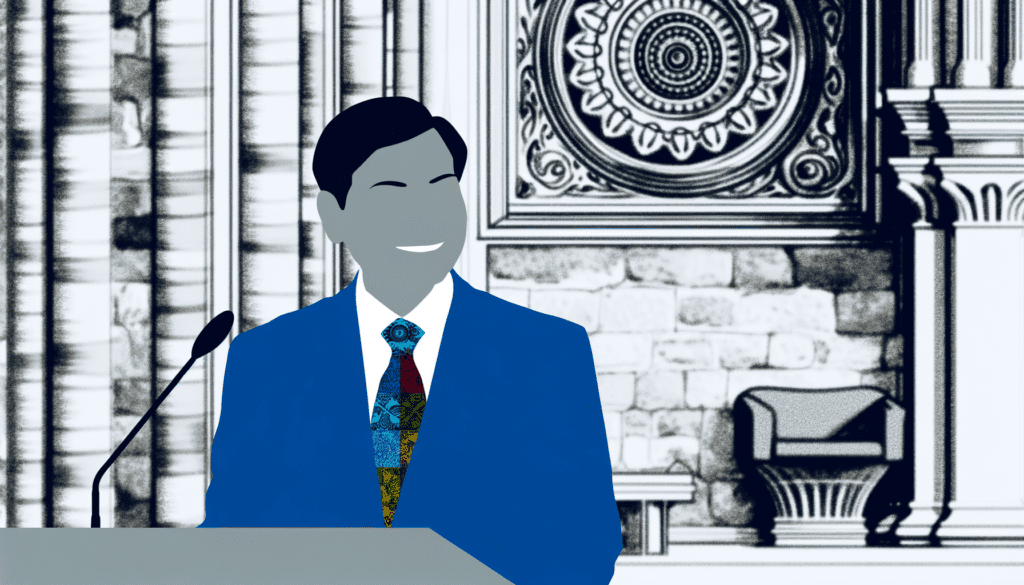A Period of Tumultuous Transition
After 15 months serving as interim leader, Larry Jameson officially steps into the role as the 10th president of the University of Pennsylvania, navigating a path shrouded with both hope and formidable challenges. Following the resignation of former president Liz Magill amidst a sweeping backlash concerning the handling of antisemitism claims, Jameson has already been fundamental in steadying Penn’s leadership amidst turbulent waters.
The departure of Magill marked a significant reckoning for Penn, underscoring perhaps the most challenging series of events that the institution has faced in recent years. Ramanan Raghavendran, Chair of Penn’s Board of Trustees, captured the moment’s gravity precisely by declaring the challenges of higher education today as unprecedented. “In such a moment,” he stressed, “there is nothing more important than leadership.”
Now permanently positioned, Jameson brings significant experience leading Penn’s renowned Raymond and Ruth Perelman School of Medicine. Penn treasures its reputation for research and innovation in education, markedly fostered during Jameson’s own transformative tenure in the medical school. However, leadership in response to current national social and political dynamics has become even more complex and urgent.
The Sting of Funding Cuts under Trump’s Administration
As J. Larry Jameson formally assumes his role, he faces daunting financial uncertainty. A dramatic $250 million funding reduction looms large due to an unprecedented executive order from President Donald Trump, targeting federal support from the National Institutes of Health (NIH). These apprehensions are far from speculative; the university administration considers these consumption cuts more potentially crippling than the 2008 financial debacle or even the dark days of the COVID-19 pandemic.
Jameson, serving during the interim months, initiated important policy changes to cushion such financial blows. Significantly, these included substantial cost-saving steps like a comprehensive hiring freeze and sharp reductions in graduate admissions. These measures reflect the overriding financial prudence that Jameson has promoted to weather future crises, though it also spotlights the bleak implications of these cuts on the academic community.
The university’s response under Jameson’s watch notably extended beyond fiscal austerity—as dictated nationally, keywords such as “diversity” and “inclusion” vanished from top-level communications, websites, and strategic messaging as educational institutions across the country reacted to Trump’s subsequent directives. Critically, these adjustments incited sharp criticism from marginalized communities and advocacy groups, deeply concerned about erosion in Penn’s stated commitments to equity.
Penn and its counterpart elite universities are at a stark crossroads, forced to navigate between compliance with national policy mandates and their stated ethical commitments to social equity. As funding threats point toward an especially defenseless future for graduate studies and institutional inclusivity, Jameson is now positioned to shape these outcomes profoundly.
Navigating an Unpredictable Future
Adopting a strong leadership stance, Jameson is tasked with safeguarding both academic freedom and financial stability within the strained contours of conservative directives. This dual challenge complicates significantly efforts to retain robust, equitable, and inclusive academic environments crucial to progressive educational experiences.
Notwithstanding these imposed constraints, Jameson’s longstanding commitment to fostering a diverse intellectual community at Penn provides strategic optimism. His previous accomplishments clearly positioned the school’s medical program as exemplary, pioneering inclusive practices. Observers from academia remain cautiously hopeful that Jameson will maneuver effectively through the light and shadow cast by financial and policy crises and continue his record of progressive leadership and innovation.
“The challenges facing higher education today, unprecedented in their complexity, underscore the profound need for resilient, visionary leadership.” — Ramanan Raghavendran, Chair Penn Board of Trustees
Indeed, leadership at this juncture imparts both the immense burden and hopeful task of navigating entrenched financial and philosophical conflicts. For now, eyes remain trained on Penn as Jameson casinos his new role to craft innovative, balanced solutions that address both fiscal survival and continued educational excellence. These solutions, inevitably, will crystalize the university’s commitment to societal wellbeing, adopting adaptive yet principled strategies focused keenly on equity, free inquiry, and mutual respect.
Amid intensified uncertainty, J. Larry Jameson embarks on his presidential tenure undertaking financial scrutiny and confronting significant policy hazards. Paradoxically, it is the magnitude of these challenges that create openings for enduring constructive change and reaffirmations of institutional resilience and moral posture reflective of Penn’s full academic vision.

